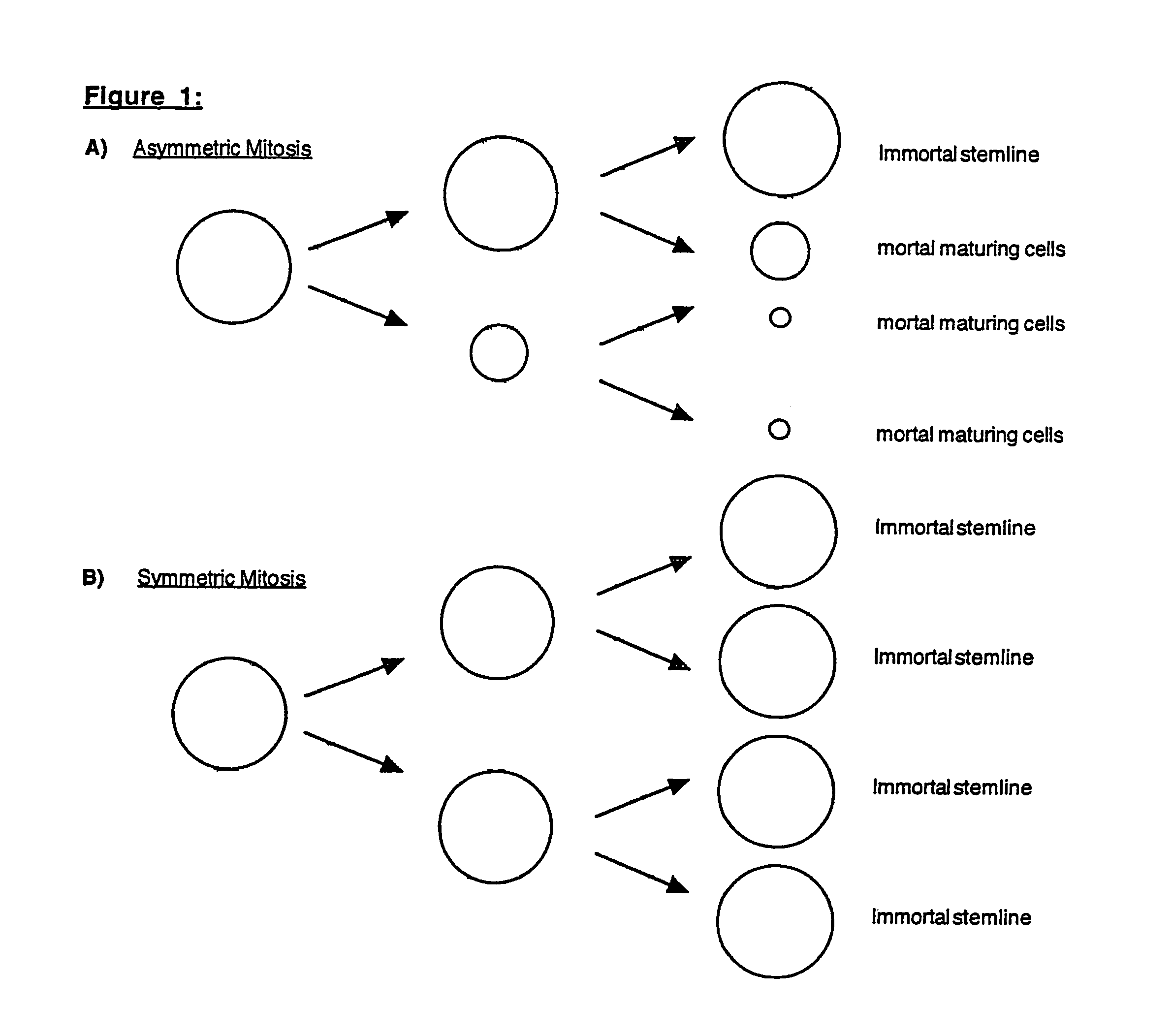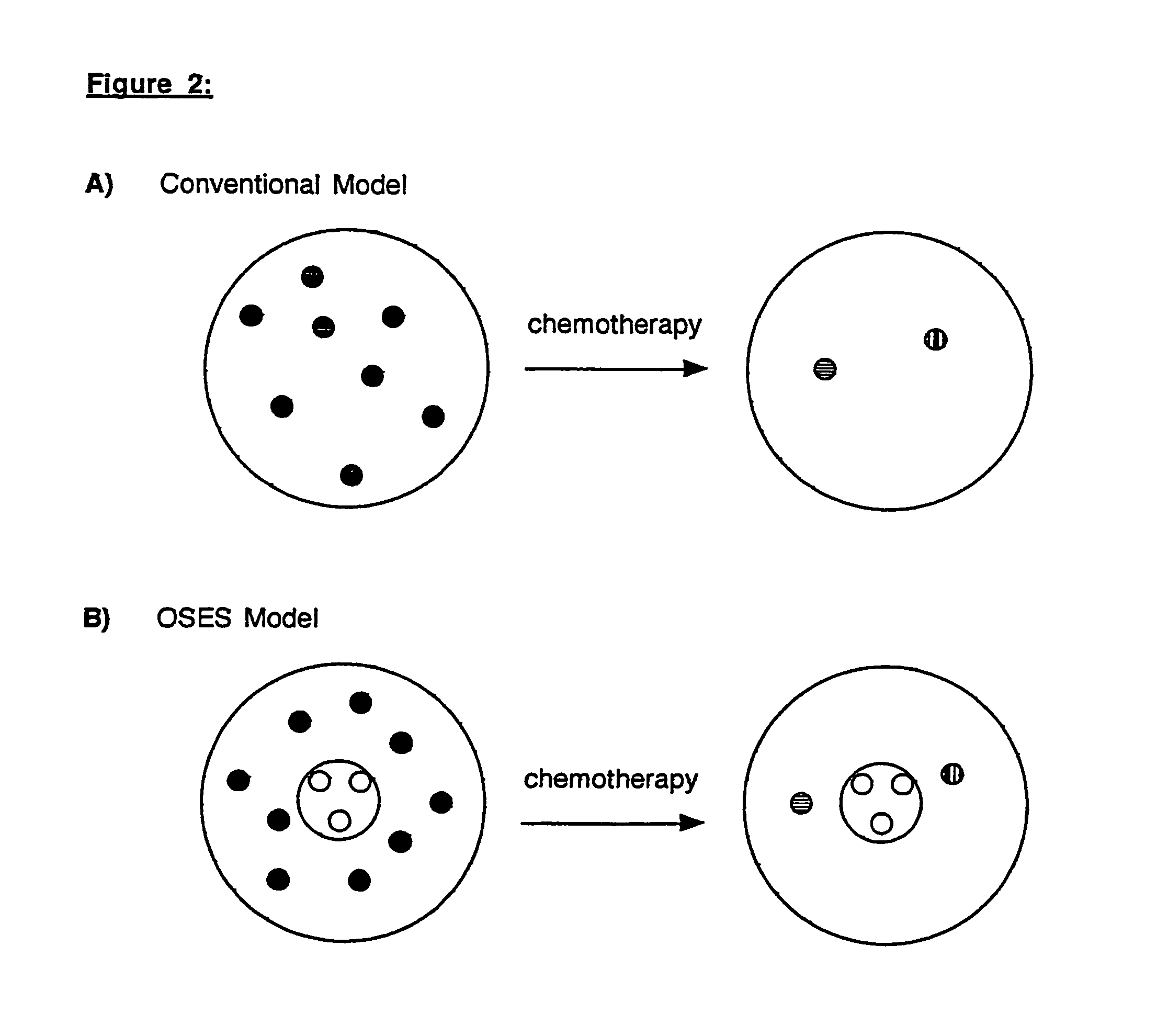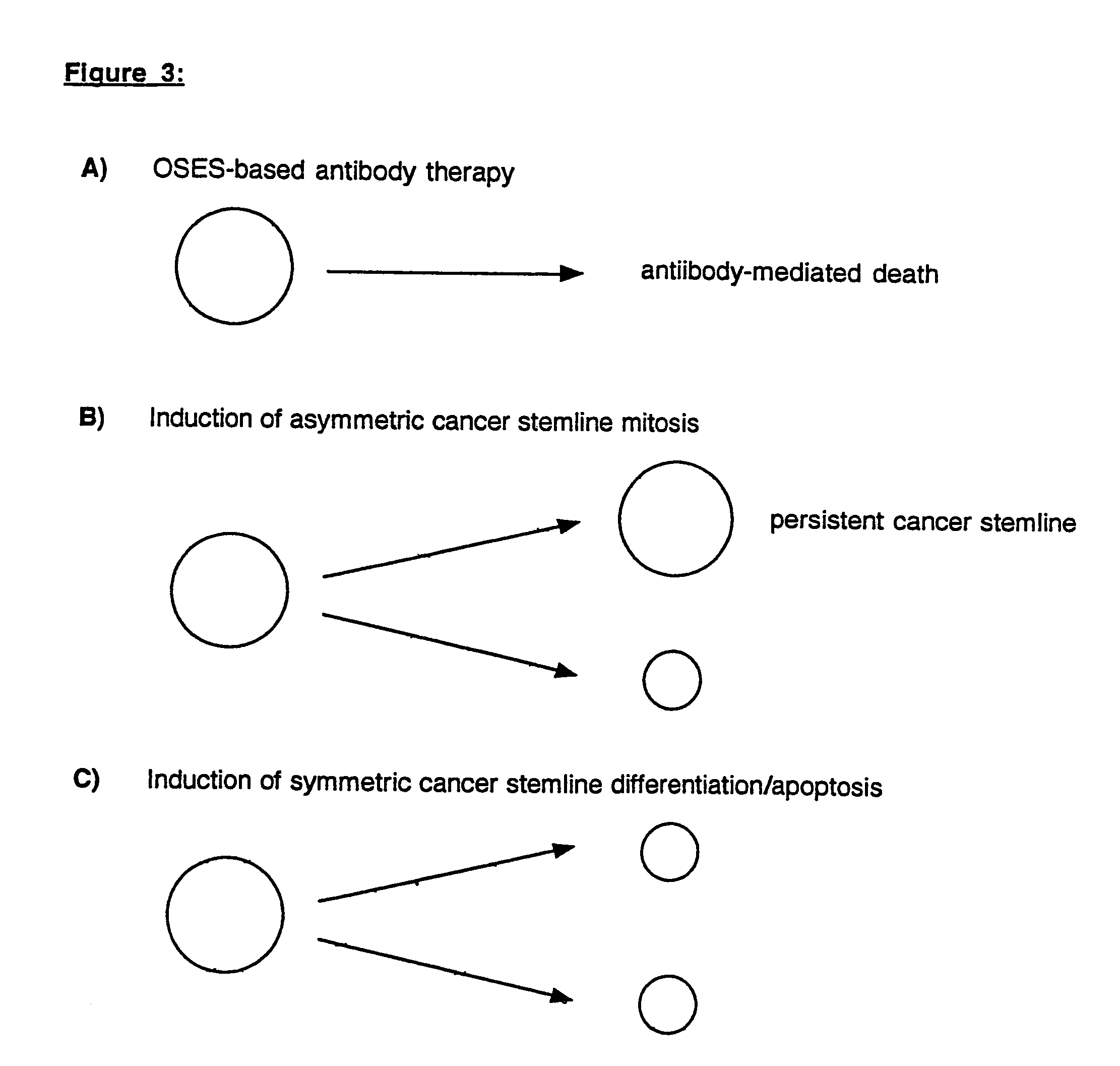Methods of cancer therapy targeted against a cancer stem line
ancer therapy technology, applied in the field of cancer therapy targeted against a cancer stem line, can solve the problems of high proliferative targets, clinical relapse, and increased tumor cell burden, so as to reduce tumor cell burden, and improve clinical relapse
- Summary
- Abstract
- Description
- Claims
- Application Information
AI Technical Summary
Benefits of technology
Problems solved by technology
Method used
Image
Examples
example 1
[0122]A patient is found to have breast cancer by conventional detection techniques (e.g., mammogram and biopsy). Monoclonal antibodies designed to bind specific antigens present on the surfaces of normal mammary gland epithelial stem cells, also possessing an attached therapeutic moiety (e.g., cytotoxin), are delivered intravenously to the patient. This therapeutic monoclonal antibody will seek out and destroy a cancer stem line fueling the breast tumor while largely sparing environmentally-sequestered normal mammary epithelial stem cells (see FIG. 3A). Efforts to limit this toxicity further are discussed in the final section, (III.).
II. Forcing a Cancer Stem Line to Undergo Asymmetric Mitosis
[0123]An alternative tactic to immunotherapy for containing a cancer stem line is to design therapies which (rather than killing stem cells) bring about the conditions of a normally sequestered stem cell micro-environment to wayward stem cells (i.e. cancer cells) which in turn should force the...
example 2
[0194]A patient is found to have pancreatic cancer by conventional detection techniques (e.g., CT scan and biopsy). A ribozyme is constructed that specifically blocks a factor (e.g., GSK-3-beta) that normally inhibits asymmetric mitosis in pancreatic epithelial stem cells. The ribozyme is placed within a viral vector and delivered intravenously to the patient. This therapeutic vector will force stem cells of pancreatic origin to divide asymmetrically thus causing the cancer stein line fueling the pancreatic tumor to assume arithmetic growth kinetics (see FIG. 3B) without significant toxicity to normal pancreatic epithelial stem cells that are dividing asymmetrically anyway.
[0195]3) Induction of Irreversible Stem Line Differentiation
[0196]As mentioned, one novel OSES-derived method of treating cancer (as described in subsection 2) is to force a cancer stem line to switch from symmetric to asymmetric mitotic division. However, in designing such a therapy, it should be remembered that ...
example 3
[0207]A patient is found to have lung cancer by conventional detection techniques (e.g., CT scan and biopsy). A ribozyme is constructed that specifically blocks a factor (e.g., SNRPN) that normally activates asymmetric mitosis in lung epithelial stem cells. The ribozyme is placed within a viral vector and delivered intravenously to the patient. This therapeutic vector will force stem cells of lung origin to divide symmetrically thus causing the cancer stem line fueling the lung tumor to assume exponential growth kinetics. This maneuver is quickly followed by intravenous administration of a starvation-inducing agent (e.g., inhibitor of nucleic acid synthesis) which forces the cancer stem line to initiate its differentiation program but in a symmetric manner thereby extinguishing the stem line (see FIG. 3C). Toxicity to normal stem cells may be minimal due to their environmental sequestration. Efforts to limit this toxicity further are discussed in the next section (III.).
III. Targeti...
PUM
 Login to View More
Login to View More Abstract
Description
Claims
Application Information
 Login to View More
Login to View More - R&D
- Intellectual Property
- Life Sciences
- Materials
- Tech Scout
- Unparalleled Data Quality
- Higher Quality Content
- 60% Fewer Hallucinations
Browse by: Latest US Patents, China's latest patents, Technical Efficacy Thesaurus, Application Domain, Technology Topic, Popular Technical Reports.
© 2025 PatSnap. All rights reserved.Legal|Privacy policy|Modern Slavery Act Transparency Statement|Sitemap|About US| Contact US: help@patsnap.com



